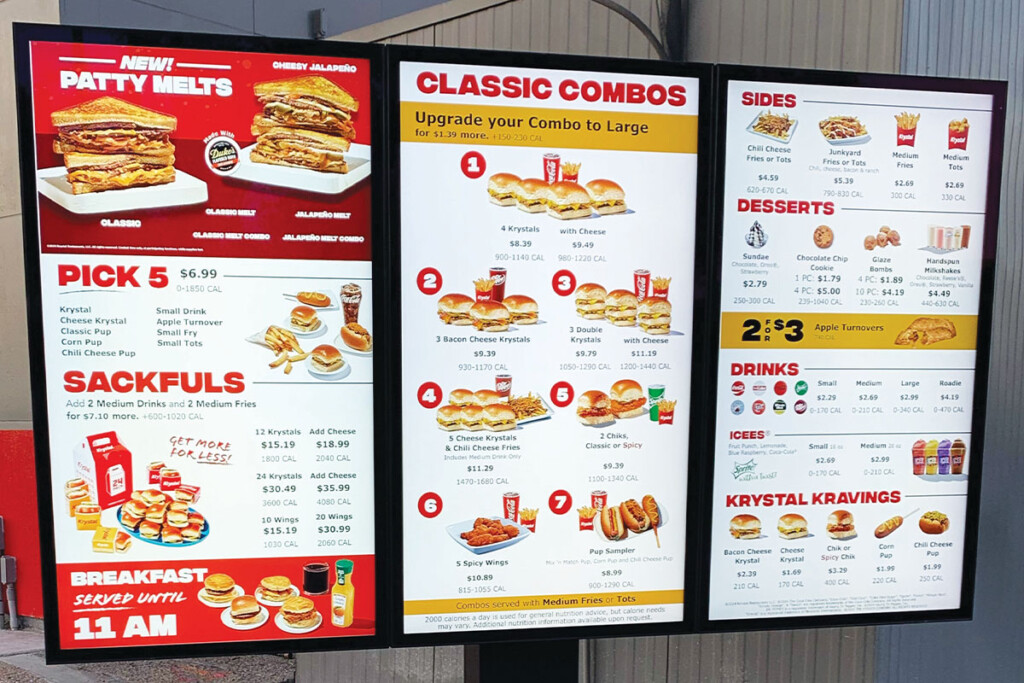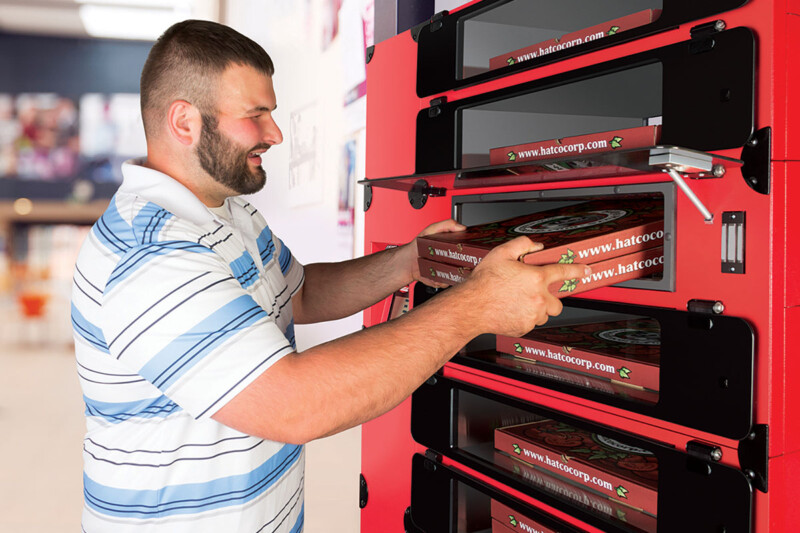Thinking Through Digital Menu Boards
Consultants dish advice, while Krystal restaurants shares how implementing the equipment has impacted their customer experience.

What if digital menu boards at restaurants could offer the same kind of relevant, personalized suggestions that mobile apps can? What if the ordering experience inside a QSR could feel comfortably familiar but also hyperlocal?
The good news is, thanks to technologies such as geofencing, they can—but maximizing the value of today’s digital menu boards demands a rethinking of the approach to putting menu items on a screen.
The biggest mistakes foodservice operators make with digital menu boards are: 1) seeing them as merely a vehicle for displaying their entire menu and 2) approaching their content with a set-it-and-forget-it mentality, suggests Toby Malbec, managing director at ConStrata Consulting in Alabaster, Ala.
“Digital menu boards aren’t just a digital representation of your static menu boards,” Malbec says. “It sounds like an obvious statement, but you go into restaurants where people have $30,000 digital menu boards and they’re doing nothing with them. It just doesn’t make any sense.”
The smarter approach, says Malbec, is to take advantage of real-time data from POS and inventory systems and use it to adjust what is displayed on a digital menu board.
If inventory of a particular item is running low, it can be temporarily removed from in-store and drive-thru digital menu boards, for example. If a drive-thru is getting backed up with orders for an item that takes longer-than-most to prepare, that, too, can come off a menu board for the time being—potentially helping alleviate order bottlenecks and promoting a better, faster experience for customers.
“It’s about, ‘How do I leverage the immediacy and the fluidity of my pricing or my availability?’” Malbec says.
Additionally, Malbec says, operators may want to consider devoting some of their digital menu-board real estate to hyperlocal content—e.g., a list of the Top 5 most popular items at that location that day, based on POS data. They may even choose to highlight a single popular item or an original customer creation, along with a brief item review from a local customer. (“Bacon + cheddar = perfection” or “We wait for this flavor all year!”, for example.)
“Digital menu boards in and of themselves do not generate revenue, but what a digital menu board has been shown to do time and time again is influence behavior.”—Toby Malbec, ConStrata Consulting
“Digital menu boards in and of themselves do not generate revenue,” Malbec notes, “but what a digital menu board has been shown to do time and time again is influence behavior.”
Malbec previously worked on digital menu-board technology for Subway restaurants, and he recalls a test where 10 units heavily promoted $5 footlong sandwiches on their digital boards, and 10 other units played up messages about premium ingredients and the option to order double meat. The result: “People who might have gone upscale went for the $5 footlong,” he says. “We influenced their behavior to the negative.” The other test group saw sales of higher-profit items increase by mid- to high-single-digit percentages.
Maximizing the use of digital menu boards comes down to being intentional and analytical about the content displayed, says Malbec.
Keith Short, design principal at Fishman & Associates in Boca Raton, Fla., further suggests paying attention to aesthetics. Digital menu boards need to be easy-to-read and offer compelling content, but they also need to visually align with the rest of your concept. Fonts and colors that look out of place can undermine your “feel,” he notes. Text-heavy displays can feel overwhelming and slow the ordering process. Images, on the other hand, can support suggestive selling and provide a visual landing point for customers.
Lastly, ensure menu boards aren’t placed so high as to be difficult for customers to read clearly, he advises.
KRYSTAL OPTS IN
At Krystal restaurants, a recent remodel of six units in and around Albany, Ga., included a technology refresh and the replacement of some static display screens with real-time digital menus that can be updated remotely, according to Kaitlin Stoehr, senior marketing director at Krystal owner SPB Hospitality in Atlanta.
“These new boards can change based on time of day, weather or special events, ultimately creating a better experience for our guests,” Stoehr says. The new, brighter boards also “give us more flexibility to highlight featured items dynamically, ensuring customers always see the most relevant options.” On the back end of the technology upgrades, the remodeled units now can measure speed of service in real time, again providing data that can inform what is displayed on menus at a given time.
The end result? “The guest experience is better than ever,” says Stoehr.
RELATED CONTENT
- Advertisement -
- Advertisement -
- Advertisement -
TRENDING NOW
- Advertisement -
- Advertisement -
- Advertisement -


